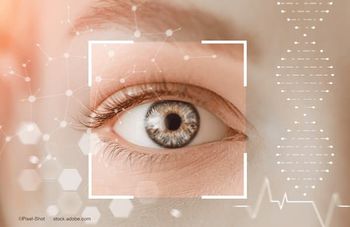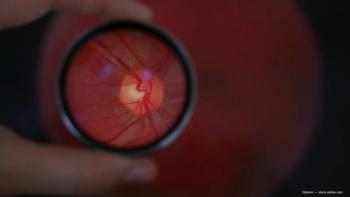
Patient satisfaction higher with aspheric IOL
Aspheric IOLs represent a major move forward in IOL design. In this study of 40 patients, visual acuity achieved with the aspheric lens was equal to or better than that achieved with the spherical lens, and patient satisfaction was significantly higher with the aspheric lens on several visual disturbance ratings.
Key Points
Chicago-Patient satisfaction is higher among those in whom aspheric IOLs are implanted than with those who receive standard lenses, according to Satish S. Modi, MD, FRCS, in a presentation here at the American Society of Cataract and Refractive Surgery annual meeting
Dr. Modi, assistant clinical professor, Albert Einstein College of Medicine, Yeshiva University, New York, and his colleagues conducted a prospective, non-randomized study of 40 patients to evaluate the visual and subjective outcomes of patients in whom an aspheric lens (ReSTOR model SN6AD3, Alcon Laboratories) or a standard spherical IOL (ReSTOR model SN60D3, Alcon Laboratories) was bilaterally implanted.
Fifteen patients received the spherical lens, and 25 had the aspheric lens implanted. All lenses were installed using a C cartridge and a 2.8-mm unenlarged incision. Follow-up was 3 months after the second eye surgery. Postoperative evaluation included logMAR visual acuity testing at various distances, patient-reported outcomes, and contrast sensitivity measured with a proprietary instrument (CSV-1000E, VectorVision Inc.).
Of the patients who received the regular lenses, 6% saw 20/20 uncorrected on day one, despite the fact that most of the patients' pupils still were dilated. Forty-three percent of the patients with aspheric lenses saw 20/20 on day one, and 85% saw 20/30.
"Overall, uncorrected acuity postoperatively in both of these groups was about 20/25, and at 1 month it was even better than that," said Dr. Modi. "At 3 months-and, of course, there's the additive effect when you put the second lens in-these patients are seeing better than 20/20 uncorrected. Certainly when you look at best-corrected [visual acuity], these numbers just improve."
Although the lenses performed comparatively over time for visual acuity, patient-reported visual disturbance ratings consistently favored the aspheric lens, he said.
Visual disturbance ratings, on a scale of 0 (none) to 7 (incapacitating) showed mean ratings for glare/flare of 2.60 for the spherical group and 1.33 for the aspheric group; halos, 3.00 spherical and 1.92 aspheric; blurred near vision, 2.80 spherical and 1.83 aspheric; blurred distance vision, 1.00 spherical and 0.42 aspheric; night vision problems, 1.80 spherical and 1.17 aspheric; and double vision, 1.40 spherical and 0.42 aspheric.
"We also looked at reading speed, and there wasn't a huge difference until we started getting down into the smaller font sizes. There we found a statistically significant difference with the aspheric lens, which performed much better than the regular lens," Dr. Modi said.
Another significant advantage to the aspheric lens was found in spherical aberration. At a 3.5-mm pupil aperture, the spherical aberration for both lenses was 0.01. "Spherical aberration really isn't a function of photopic pupil size," Dr. Modi said.
At a 5-mm pupil aperture, however, the standard spherical lens had a 15-fold increase in spherical aberration, compared with a six-fold increase for the aspheric lens. "This directly translates into clinical results," he said.
Ultimately, Dr. Modi called the aspheric lens "a major move forward in technical design.
"Visual disturbances are minimal, patient satisfaction was significantly higher in the aspheric group, and patients are anxious to have the second eye done with this lens," he said.
Newsletter
Don’t miss out—get Ophthalmology Times updates on the latest clinical advancements and expert interviews, straight to your inbox.








































